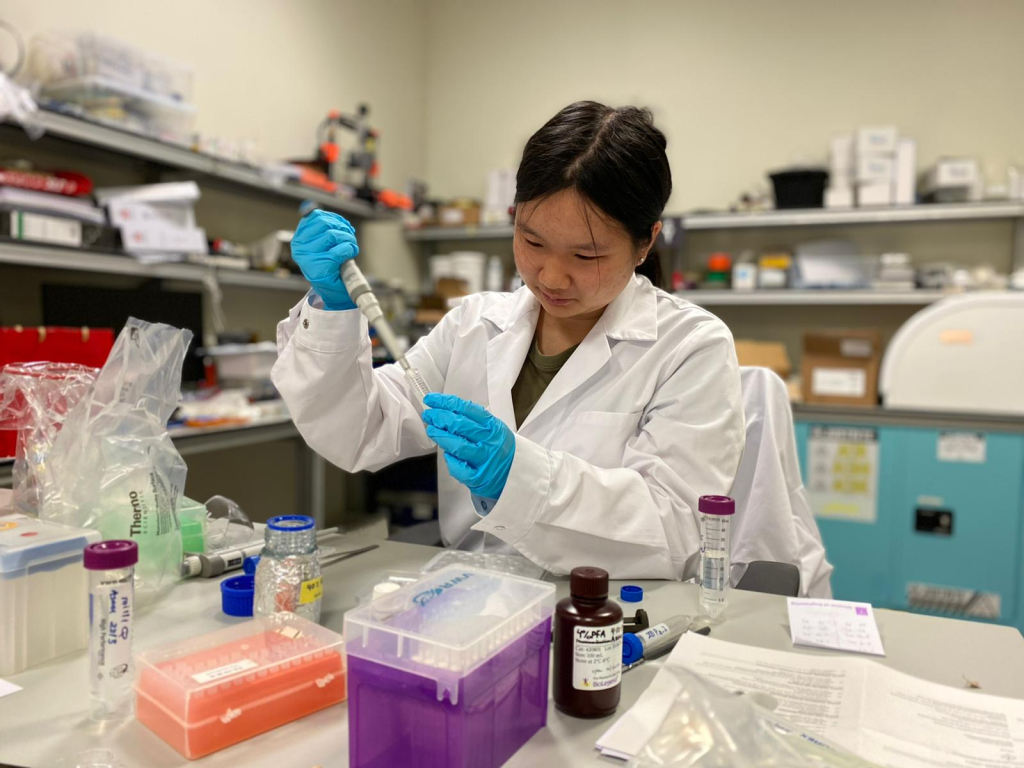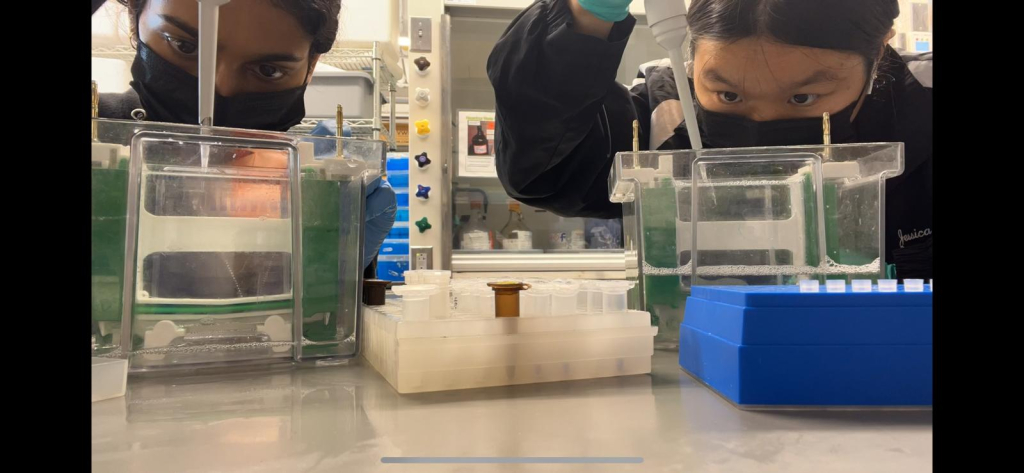By: Jessica Wong
When I was young, I would come home after school and spend hours in my living room, captivated by the guppies in my fish tank. My mother and I had bought three red-yellow hybrid males and two silver females. Within a few months, there were around a hundred guppies with many colors and black-patterned tails, none of which looked the same. I didn’t have the terminology or conceptual knowledge to understand what was going on at the time, but one day I would learn in science class that genetic mutations occurred with each generation.
In high school, my biology teacher had terrariums with frogs, a leopard gecko, and a betta fish. It easily became my favorite classroom and my favorite class. We learned about the Krebs cycle, the chi-square test, and levels of biological organization. In one of our experiments, we used micropipettes to observe antibiotic resistance in E. coli, and I loved seeing the tangible results and confirmation of my hypotheses. The kinesthetic and visual factors of science experiments always stuck with me, and I applied what I had learned to my daily observations and current events on the news.
I spent a summer in the Dominican Republic teaching English, and we lived across a hospital. There was one day when the hospital’s parking lot was crowded with motorcycles, and my friend explained that the clinics were offering free walk-in services for those who could not afford to regularly seek medical attention. I devoted my senior year to researching the lack of access to affordable healthcare and realized that I wanted to personally contribute to engineering a solution, specifically in personalized medicine.
Knowing that science, particularly biomaterials, was a consistent and growing interest of mine, I took a step toward the fields of biomolecular science and biomedical engineering at NYU. Since then, I have gained experience in lab techniques in advanced molecular biology and organic chemistry labs. I’m currently studying abroad at NYU Abu Dhabi and conducting research in the Laboratory for Immuno Bioengineering Research and Application, running T-cell exhaustion tests on polyacrylamide hydrogels and studying interactions between macrophages, fibroblasts, and myofibroblasts on collagen hydrogels. My time in the lab involves fabricating hydrogels, refreshing cell cultures, and fluorescence-activated single cell sorting with the cytometer. In addition, the support that I have received from my labmates and the support that I extend to new researchers spurs a driven, inquisitive, and friendly research environment.
Science has always involved finding the answer to an observation or question I have. It has encouraged me to ask questions and be realistic in accounting for my mistakes. The collaborative factor in learning about other lab mates’ research and passions is another motivation and environment that I enjoy engaging in. This summer, I’m excited to learn more about experimental design, apply the protein purification and expression lab techniques I have learned, and collaborate with fellow researchers as I join the effort of developing biomaterials in the Montclare lab.

